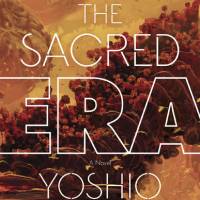Lauded as the most important work of the Japanese science-fiction writer, Yoshio Aramaki, "The Sacred Era" is a bold undertaking.
The Sacred Era, by Yoshio Aramaki, Translated by Baryon Tensor Posadas.
272 pages
UNIVERSITY OF MINNESOTA PRESS, Fiction.
Aramaki succeeds in setting up a post-apocalyptic world where the oceans are drying up, Earth's population is drastically diminished, food is scarce and society is ruled by an oppressive Papal Court.
The story opens with a young man named K, who has devoted his life to studying the Christian-esque scriptures of the Holy Empire of Igitur, traveling to the capital in hopes of joining the Sacred Service. After passing the rigorous Sacred Examination, K becomes the youngest member of the Service and receives an unusual, top-secret assignment to conduct research on the distant Planet Bosch, named in reference to Hieronymus Bosch's triptych, "The Garden of Earthly Delights."
The mythical planet is believed to have once orbited Earth, but has since drifted off 1,000 light years to the far reaches of the empire. Although the conditions of life on Earth are virtually primitive, technology has advanced enough to allow travel through hyperspace.
As K traverses the universe and visits various planets on his pilgrimage to Bosch, he is haunted by the ghost of Darko Dachilko, a heretic executed 700 years ago, and learns more about his religion and connection to the mysterious planet. While the depiction of women as sex objects throughout the novel is unfortunate, the plot weaves together theology, illusions and scientific discovery in an imaginative and dream-like way that leaves an impression.

















With your current subscription plan you can comment on stories. However, before writing your first comment, please create a display name in the Profile section of your subscriber account page.